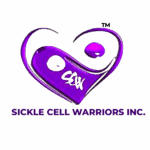Mouhadamou says, “I have had a chronic leg ulcer for the last 2 months and it’s getting yellow. My doctor told me that it’s a dead tissue so he gave me collagenous to get rid of the dead tissue, but the yellow stuff is growing up.”
Any advice on how to deal with and heal a leg ulcer?
http://www.facebook.com/SickleCellWarriors/posts/10151137670707849
You can also access resources for best practices in healthcare here.
Here is more information from current research on leg ulcers in sickle cell disease:
The clinical manifestations of SCD are diverse. Among them, leg ulcers are relatively common and can be disabling. Leg ulcerations have been a long recognized complication of SCD and even the first SCD patient to be described in North America in 1910 had chronic leg ulcerations(1, 2). The prevalence of leg ulceration varies, being low before age 10 years. It is most common in sickle cell anemia and less often seen in HbSC disease or HbS-β thalessemia. Its geographical distribution is also variable, affecting 75% of HbSS patients in Jamaica but only 8–10% of North American patients (3–5).
The pathogenesis of chronic ulcers in SCD is complex, and may include the following: Mechanical obstruction by dense sickled red cells, venous incompetence, bacterial infections, abnormal autonomic control with excessive vasoconstriction when in the dependent position, in situ thrombosis, anemia with decrease in oxygen carrying capacity, and decreased nitric oxide bioavailability leading to impaired endothelial function have all been proposed as potential contributing factors (6, 7).
Severity Levels
Many severity levels for leg ulcers are based on size, depth, and duration. Staging based on depth is as follows:
-
Stage 1: Nonblanchable erythema of intact skin, the heralding lesion of skin ulceration. In individuals with darker skin, discoloration of the skin, warmth, edema, induration, or hardness may also be indicators.
-
Stage 2: Partial-thickness skin loss involving epidermis, dermis, or both. The ulcer is superficial and presents clinically as an abrasion, blister, or shallow crater.
-
Stage 3: Full-thickness skin loss involving damage to or necrosis of subcutaneous tissue that may extend down to, but not through, underlying fascia. The ulcer presents clinically as a deep crater with or without undermining of adjacent tissue.
-
Stage 4: Full-thickness skin loss with extensive destruction, tissue necrosis, or damage to muscle, bone, or supporting structures (eg, tendon, joint capsule). Undermining and sinus tracts also may be present.

